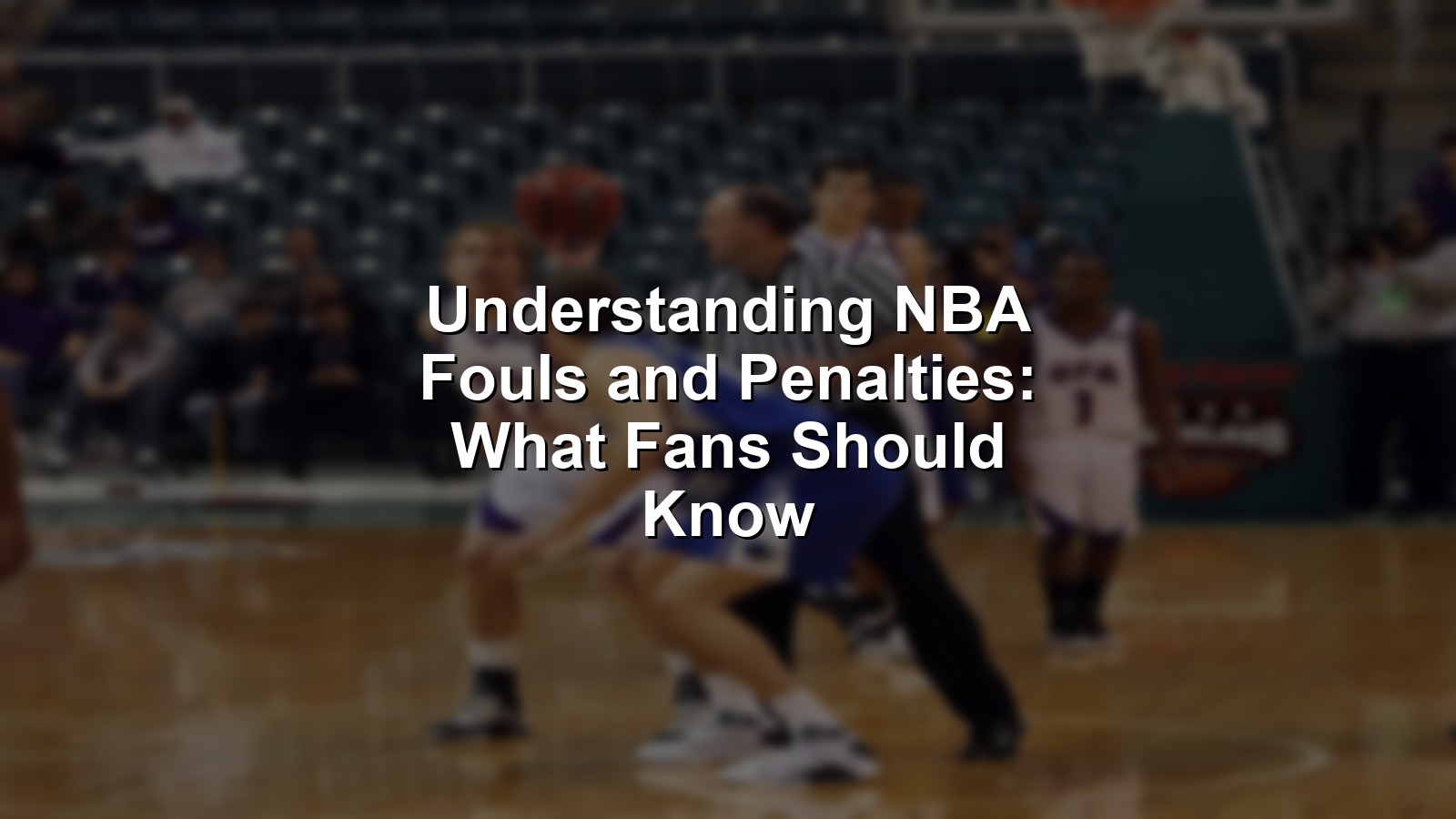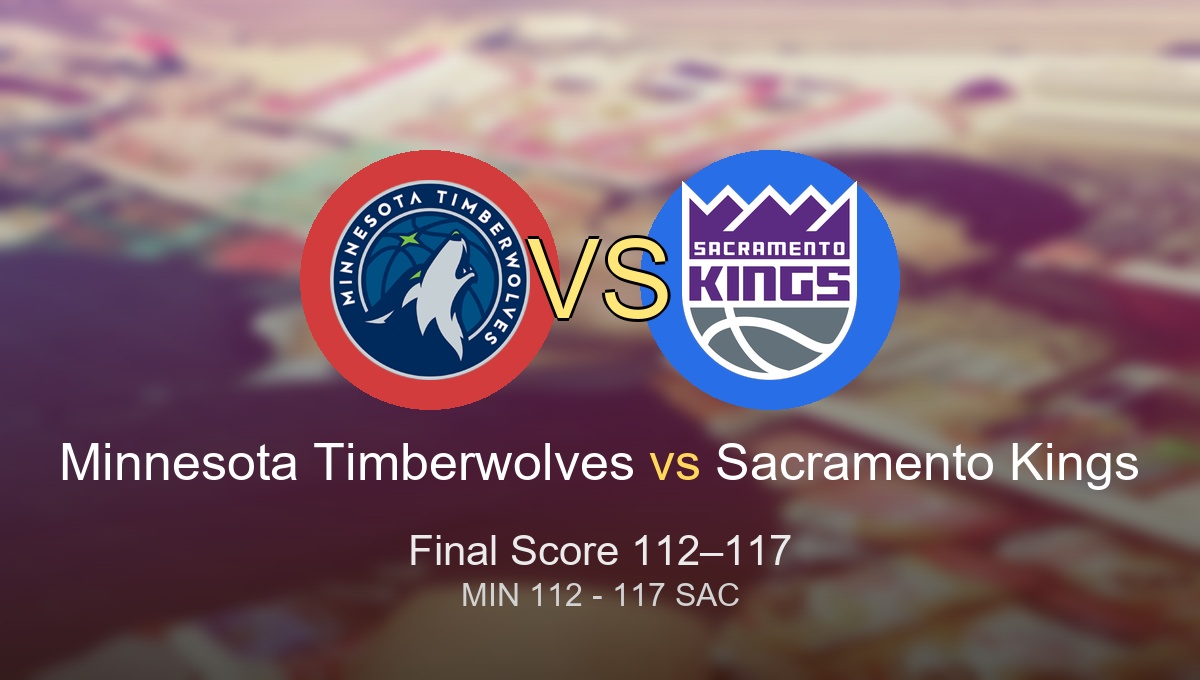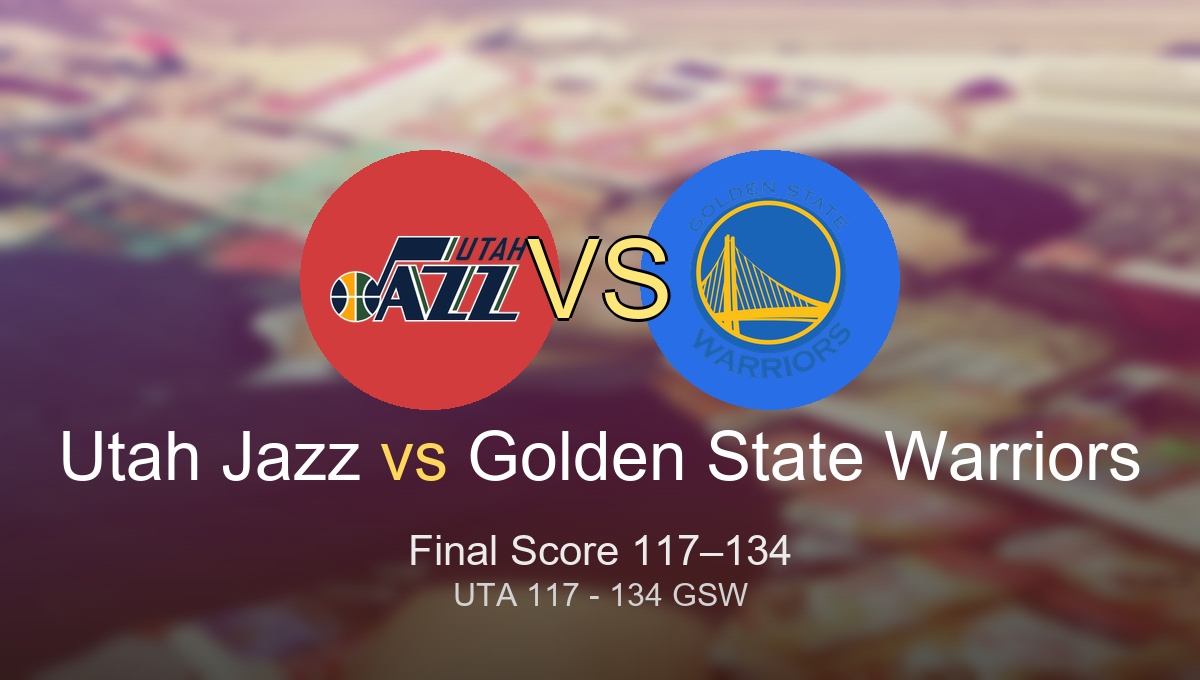
For anyone who has watched an NBA playoff game—spectacular, unpredictable, often nerve-wracking—understanding NBA fouls and penalties isn’t just a technical curiosity. It’s the secret script behind every clutch block, 50-point night, or sudden comeback. Knowing why the whistle blows can make every game more vivid, especially as championships, player legacies, and franchises are shaped by split-second calls.
Fouls and penalties are the hidden language of NBA drama. For fans, they’re the rhythm, the rules, and the real difference between celebrated dynasty and heartbreaking defeat. The art of drawing (or dodging) a foul can define a superstar’s greatness, extend a career, or tilt a title run.
This guide unpacks the ten types of NBA fouls and penalties every fan should know—not just the hand-raising basics, but the moments where rules shape legends.
Context: Why This Matters
In ball conversations from Brooklyn to the Bay, the rules spark as much debate as the rosters. Is a flagrant foul just “old school toughness” or a “cheap shot”? Are superstar calls real, or just barbershop myth? The game’s greatest moments—Jordan’s push-off, Harden’s step-back—often hover at the boundary lines of legality.
Every NBA team is built around exploiting, avoiding, or surviving fouls. Champions have elevated this legal gray area into an art form. Knowing the difference between a blocking foul and a charge, or what makes a tech “soft” or game-shifting, is part of seeing the full picture.
So when the stakes rise, the rules aren’t background noise—they’re often why dynasties rise, and challengers fall.
Methodology
To rank and explain the ten most important NBA fouls and penalties, we focused on their relevance to game outcomes, player strategy, and fan understanding:
- Iconic moments when each foul or penalty changed a contest or series
- Historical significance, controversy, and how often these scenarios decide big games
- Influence on player reputations, legacies, and rule changes over time
Data comes from:
– NBA Official Rules and Stats (nba.com)
– Deep dives on Basketball-Reference
– Long-term media and Hall of Fame discussions (NBA Official Hall of Fame)
Approximate weightings:
– Impact on playoff or Finals games: 40%
– Rulebook clarity and player/fan relevance: 30%
– Frequency and ahistoric/modern comparisons: 30%
This isn’t just a list—it’s a tour through the high-stakes drama of whistle and consequence.
Whistles That Change Everything: The 10 NBA Fouls and Penalties Fans Must Know
1. Shooting Foul (The Three Free Throws That Changed History)
Think back to the 1998 NBA Finals. With the Bulls and Jazz locked in combat, every possession mattered, but beneath the surface, the real battle was for the whistle. When John Stockton committed a shooting foul against Michael Jordan at the elbow, the moment sent Jordan to the line—and narrative momentum shifted.
Shooting fouls are the heartbeat of NBA tension. They decide late leads, fuel comeback runs, and, when whistled beyond the arc, can flip the entire dynamic of a possession in seconds. Every franchise star from Kobe Bryant to Steph Curry mastered the subtle art of baiting contact or drawing a wrist-slap.
By awarding free throws, shooting fouls force defenders to walk a tightrope between aggressiveness and caution, especially in the crunch. They also spotlight the league’s ongoing battle with “unnatural shooting motions,” a topic that’s shaped MVP debates and rule tweaks alike.
“No easy buckets—that’s the rule,” one old-school coach once said, “but in this league, you better make sure you don’t touch the shooter.”
Key facts:
– Results in 2 or 3 free throws
– Occurs during the act of shooting
– Huge impact on close games and scoring titles
Authoritative sources: nba.com, basketball-reference.com
🧵 On X
https://x.com/search?q=NBA%20shooting%20foul&src=typed_query
2. Offensive Foul (The Charge Heard ’Round the League)
Game 1, 2018 NBA Finals: LeBron James barrels down the lane, looking unstoppable, but Kevin Durant steps in. The call? Offensive foul. Golden State ball. The momentum shifts, and so does NBA history.
Offensive fouls—often called “charges”—are a badge of sacrifice and savvy. They require reading the attack, planting feet, and withstanding a full-speed collision, all for a single turnover. In eras dominated by isolation and superstars, taking a charge is both an art and a weapon for defenders.
It’s not just the mechanics. Controversial charge/block calls have fueled endless arguments about “restricted zones,” instant replay, and what counts as being “set.” Some players master the trick (see: Kyle Lowry, Marcus Smart); for others, it’s a fatal mistake.
A fan on X said, “Nothing changes a playoff run like a clutch charge.”
Key facts:
– Turns ball over, negates basket if scored
– Decided by defender’s position and timing
– Essential to elite defensive teams
Authoritative sources: nba.com, basketball-reference.com
🧵 On X
https://x.com/search?q=NBA%20charge%20offensive%20foul&src=typed_query
3. Blocking Foul (Half-Second, Whole Season)
Western Conference Finals, 2012. James Harden darts in for a layup, but Manu Ginobili slides over—half a second too late. The call: blocking foul. Thunder fans erupt; Spurs fans groan. The entire moment tilts on a defender’s foot placement.
Blocking fouls test split-second instincts. Too late, it’s points for the attacker; too early, it’s textbook defense. The fine line between blocking and charging has inspired more debates and rule tweaks than any other judgment call.
Superstar slashes—Dwyane Wade, Ja Morant, Russell Westbrook—often live at this edge. For defenses, mastering the “verticality” and timing when contesting a shot is both science and gamesmanship.
“It’s the toughest call for any ref,” a longtime referee admitted. “You live with good positioning, hope for the right whistle.”
Key facts:
– Usually called on defenders in motion or not “set”
– Opponent gets free throws if shooting
– Judged in real time by officials’ positioning
Authoritative sources: nba.com, espn.com
🧵 On X
https://x.com/search?q=NBA%20blocking%20foul&src=typed_query
4. Personal Foul (The Six-Whistle Exit)
Late in Game 7, a star stares at the scoreboard: five fouls, one left. Every move is calculated, every reach a potential disaster. Then—in a tangle under the basket—number six sounds, and he’s done.
Personal fouls are the invisible shot clock ticking against defenders and big men. Every player gets six. Go over? It’s automatic ejection. Veterans like Tim Duncan and Kevin Garnett learned to “play with five”—limiting risk and still influencing the game.
In fouling out, the stakes shift from X’s and O’s to pure survival. Coaches save their best for crunch time; opponents probe for weaknesses. Title runs have died (or lived) at the hands of this simple stat.
A famous quote: “Foul trouble is everybody’s business in the playoffs.”
Key facts:
– Assessed for illegal physical contact
– Six per player per game; sixth is ejection
– Strategic for attacking star defenders
Authoritative sources: nba.com, basketball-reference.com
🧵 On X
https://x.com/search?q=NBA%20personal%20foul&src=typed_query
5. Technical Foul (The Whistle That Silences the Crowd)
Game 6, 2016 NBA Finals: Draymond Green, both trash-talker and defensive backbone, picks up a technical and swings the momentum. Suddenly, the Warriors’ run sputters—and the Cavs breathe life.
Technical fouls are emotional inflection points. They are handed out for arguing calls, taunting, flopping, or any unsportsmanlike behavior that crosses the line. For superstars (like Rasheed Wallace, Chris Paul, Luka Doncic), techs become both badge of intensity and source of risk.
A single technical results in one free throw and often a possession swing. Rack up too many in the playoffs, and you’re suspended—a fate that changed the outcome of the 2016 Finals.
“Techs don’t just cost points,” tweeted a fan, “they cost championships.”
Key facts:
– Not always tied to physical play
– Results in one free throw for opponent
– 2nd tech in one game = automatic ejection
Authoritative sources: nba.com, espn.com
🧵 On X
https://x.com/search?q=NBA%20technical%20foul&src=typed_query
6. Flagrant Foul (Playoff Heartbreak or Heroism)
Game 5, 2004 NBA Playoffs. Kobe Bryant drives baseline; Karl Malone hammers him. It’s a flagrant—crowds roar, strategies scramble. What’s just “hard playoff defense” has become a suspension risk, or even a black mark on legacy.
Flagrant fouls, divided into Flagrant 1 and Flagrant 2, penalize dangerous or excessive contact. The evolution of this rule is a timeline of shifting NBA attitudes—from the Bad Boys Pistons’ reign to the “soft” or “protect-the-shooter” era. Modern players must walk a razor’s edge: physical but not reckless, intense but not dirty.
When a flagrant is called, the opponent gets free throws and the ball—a double whammy with season-altering influence. Some fans miss the “old school”; others welcome the safety.
“The line moves every season,” mused a commentator, “but when you cross it, everyone knows.”
Key facts:
– Flagrant 1: unnecessary contact (foul + free throws + possession)
– Flagrant 2: excessive, violent, leads to ejection
– More common in playoff intensity
Authoritative sources: nba.com, basketball-reference.com
🧵 On X
https://x.com/search?q=NBA%20flagrant%20foul&src=typed_query
7. Illegal Screen / Moving Screen (The Pick That Wasn’t)
Steph Curry sprints off a pick, drains the three, the arena explodes—then, the whistle: moving screen. Suddenly, the highlight is erased, and the momentum dies.
Illegal (moving) screens are among the most nuanced fouls, especially crucial in today’s pace-and-space game. A screen is legal only if the screener is stationary. Even a subtle slide or lean brings down multi-million-dollar plays in an instant.
Elite teams—from the Warriors to the 2014 Spurs—live off pick-and-roll action. Knowing how to “sell a call” or stay invisible is as much a skill as dunking. “If you don’t set a good screen,” one coach observed, “you might as well not play.”
Key facts:
– Results in turnover, usually never free throws
– Difficult to officiate consistently
– Big men masters: Bill Laimbeer, Ben Wallace, Draymond Green
Authoritative sources: nba.com, espn.com
🧵 On X
https://x.com/search?q=NBA%20illegal%20screen&src=typed_query
8. Loose Ball Foul (The Scramble That Changes Possession)
It’s Game 2 of a gritty playoff series. The shot goes up, every player lunges for the rebound. Suddenly, an elbow or shove—loose ball foul. The momentum resets.
Loose ball fouls usually happen on rebounds or fifty-fifty balls, rarely involving the shooter. In close contests, they are kingmakers—giving extra chances or free throws to teams that hustle hardest. Rebounders like Dennis Rodman, Andre Drummond, and Charles Oakley made careers out of drawing or dodging these whistles.
As a fan on X put it: “Loose ball fouls win rings when no one’s watching.”
Key facts:
– Called when neither team has clear possession
– May result in free throws (if in penalty)
– Big in late-game situations
Authoritative sources: nba.com, basketball-reference.com
🧵 On X
https://x.com/search?q=NBA%20loose%20ball%20foul&src=typed_query
9. Delay of Game / Violation (The Hidden Momentum Stopper)
End of the third quarter—Lakers and Celtics, tension building. The whistle blows for delay of game: a kicked ball, holding the ball after a made basket, or stepping over the line. It seems small, but the rhythm is interrupted and tempers can flare.
Delay of game is the penalty wired for the little things—stalling, obstruction, subtle rule-bending to buy time or ice a shooter. Collect two in one game, and it’s a technical—opponents get a free throw.
While rarely highlighted in highlight reels, these moments can determine who gets a shot (or the ball) at the most vulnerable moments of a contest.
As an ex-NBA guard noted, “Sometimes, the tiny stuff gets you beat.”
Key facts:
– Warning on first infraction, technical foul after second
– Includes kicked balls, stepping over the line, game delays
– Impacts late, tense possessions
Authoritative sources: nba.com, basketball-reference.com
🧵 On X
https://x.com/search?q=NBA%20delay%20of%20game&src=typed_query
10. Clear Path Foul (Fast Breaks and Free Points)
Picture a 2-on-1 fast break in the open court. The defender, beat by a step, wraps up the ballhandler from behind. Whistle. The ref signals the clear path foul.
This modern addition is designed to encourage playmaking and prevent tactical fouls from robbing fans of dunks and moments. A clear path foul means two free throws and possession, punishing defenders for stopping easy fast-break opportunities. It’s a rule tailored for the pace and space era—think Giannis, LeBron, or Ja exploding in transition.
When called, the clear path foul flips the advantage instantly and adds new depth to endgame strategy.
As a fan posted: “You want dunks, not stoppages.”
Key facts:
– Called when a defender fouls from behind on a break with no other defenders ahead
– Results: 2 free throws AND possession
– Speeds up the game, benefits athletes in transition
Authoritative sources: nba.com, espn.com
🧵 On X
https://x.com/search?q=NBA%20clear%20path%20foul&src=typed_query
Final Thoughts
Understanding NBA fouls and penalties is about more than memorizing the rulebook. It’s the mirror held up to every era: from hard-nosed 1980s paint battles to the free-flowing, star-driven league of today. These calls decide legacies. They build legends. They supply fuel for a thousand arguments, both online and in every gym or barbershop where hoops fans gather.
Every new season, the balance between rules and skill tips in ways old heads and new fans debate endlessly. More threes, faster breaks, and evolving rule tweaks will continue to reshape which fouls matter most—and how much the whistle guides who wins the next ring.
If you want to see the NBA’s real secrets, watch for the moments after the whistle—the quick glances, the rising hands, the sideline strategy. That’s where legacies are made, and eras defined.
So next time the whistle sounds in a playoff game, remember: someone’s championship just changed.



